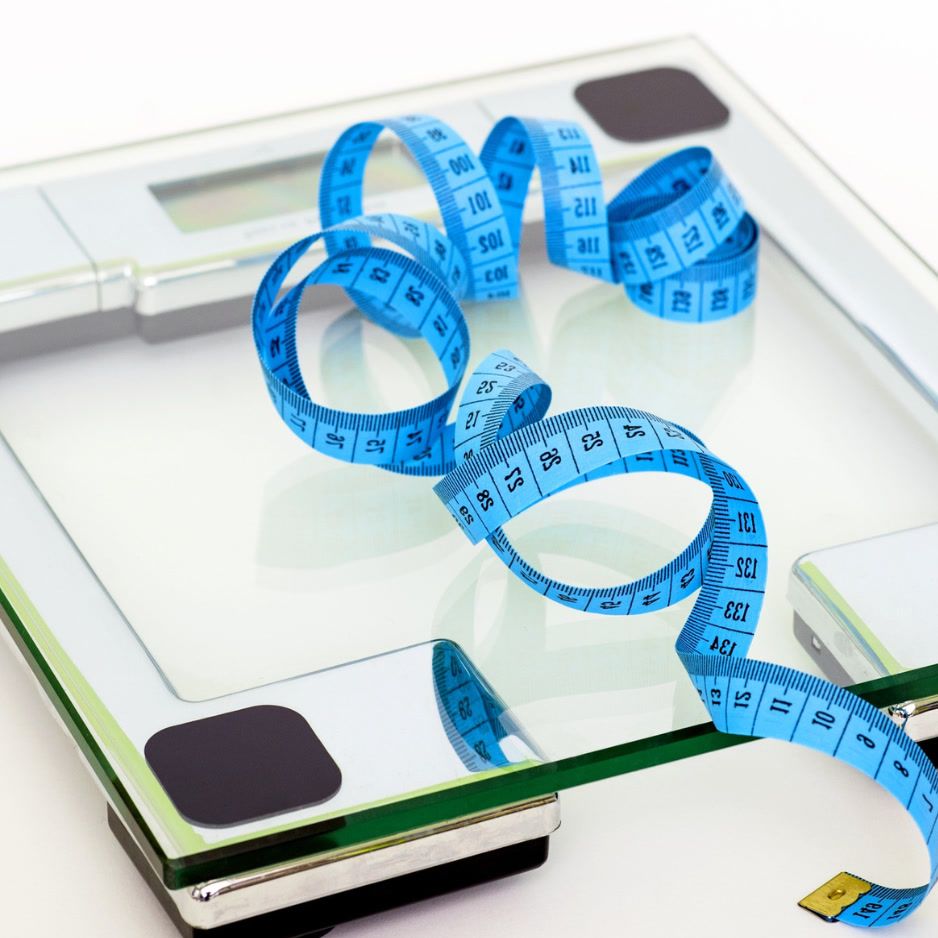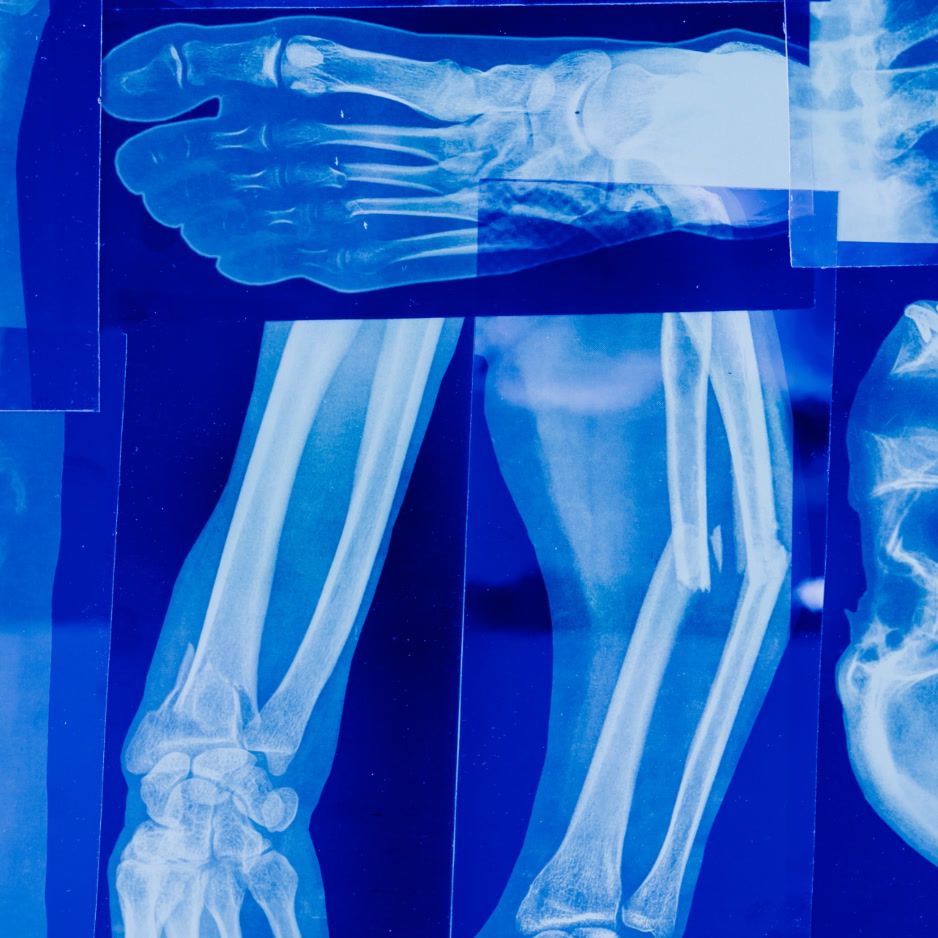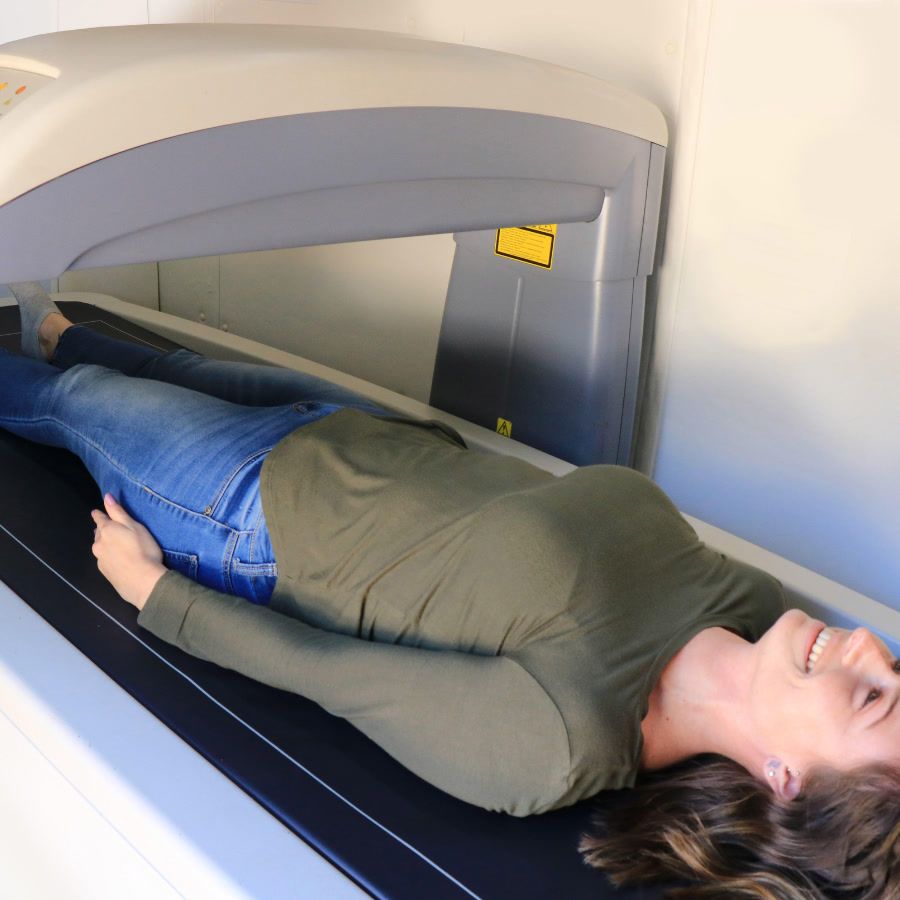The Sitting-Rising Test: A Simple Movement Predicting Longevity and Health
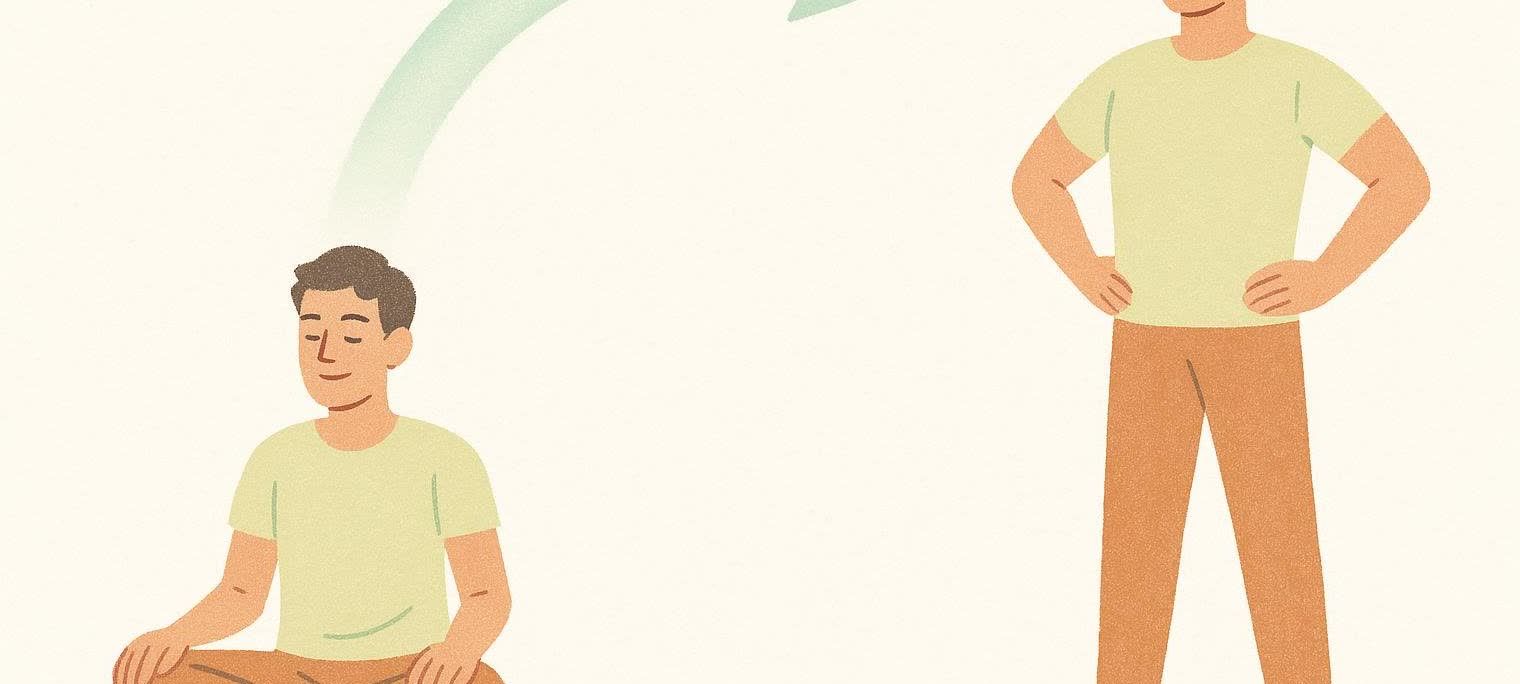
The Sitting-Rising Test: How a Simple Movement Predicts Longevity and Functional Health
Can a 30-second movement predict how long you'll live? According to groundbreaking research published in the European Journal of Preventive Cardiology, the sitting-rising test (SRT)—a simple assessment of your ability to sit on the floor and stand back up—is a surprisingly powerful predictor of mortality risk.
Those who scored lowest on this test faced 5-6 times higher mortality risk compared to those who achieved perfect scores. This isn't just about living longer—it's about living better. The sitting-rising test evaluates multiple aspects of functional fitness that directly impact your quality of life: muscle strength, flexibility, balance, and body composition. Think of it as a powerful indicator of your healthspan—the years you'll spend healthy, active, and independent.
Table of Contents
- What Is the Sitting-Rising Test?
- The Science Behind the Longevity Connection
- How to Perform the Test: Step-by-Step Instructions
- The Sit-Rise Test for Seniors: Special Considerations
- How Is the Sitting-Rising Test Scored?
- What Your Score Really Means
- How Sedentary Behavior Impacts Your Sitting-Rising Test Score
- The Body Composition Connection: Why DEXA Data Matters
- Evidence-Based Strategies to Improve Your Score
- Beyond the Test: Building Functional Longevity
- Putting It All Together: Sample Scenarios
What Is the Sitting-Rising Test?
The sitting-rising test was developed by Dr. Claudio Gil Araújo, a Brazilian physician and researcher who recognized the need for a simple, equipment-free assessment of functional fitness. Unlike traditional fitness tests that measure isolated capabilities (like how fast you can run a mile), the SRT evaluates your body as an integrated system.
The test is deceptively simple: starting from a standing position, you must:
- Lower yourself to sit cross-legged on the floor
- Rise back to standing

The catch? You must do this using minimal support from your hands, arms, or knees. What seems like a basic movement actually requires a complex orchestration of:
- Muscle strength (particularly in your legs, core, and stabilizers)
- Flexibility (hip, ankle, and spine mobility)
- Balance and coordination (proprioceptive awareness and control)
- Body composition (favorable muscle-to-fat ratio for efficient movement)
Dr. Araújo's insight was profound: this single movement pattern mirrors many of the physical challenges we face in daily life and aging. From getting up from the floor after playing with children, to recovering from a stumble, to simply maintaining independent living—the SRT captures functional capacity in a way that no gym machine can replicate.
The Science Behind the Longevity Connection
The large-scale research published in the European Journal of Preventive Cardiology provided compelling evidence for the SRT's predictive power. The study followed 4,282 participants aged 46-75 for a median of 12.3 years, tracking both their initial SRT scores and subsequent mortality outcomes.
Key Findings on Mortality Risk
The study revealed a strong, dose-response relationship between SRT scores and all-cause mortality risk:
| SRT Score Range | Relative Mortality Risk |
|---|---|
| 0-3 (Poor) | 5-6x higher risk |
| 4-7 (Fair to Good) | 3-4x higher risk |
| 8-10 (Excellent) | Reference (lowest risk) |
Data based on the study published in the European Journal of Preventive Cardiology
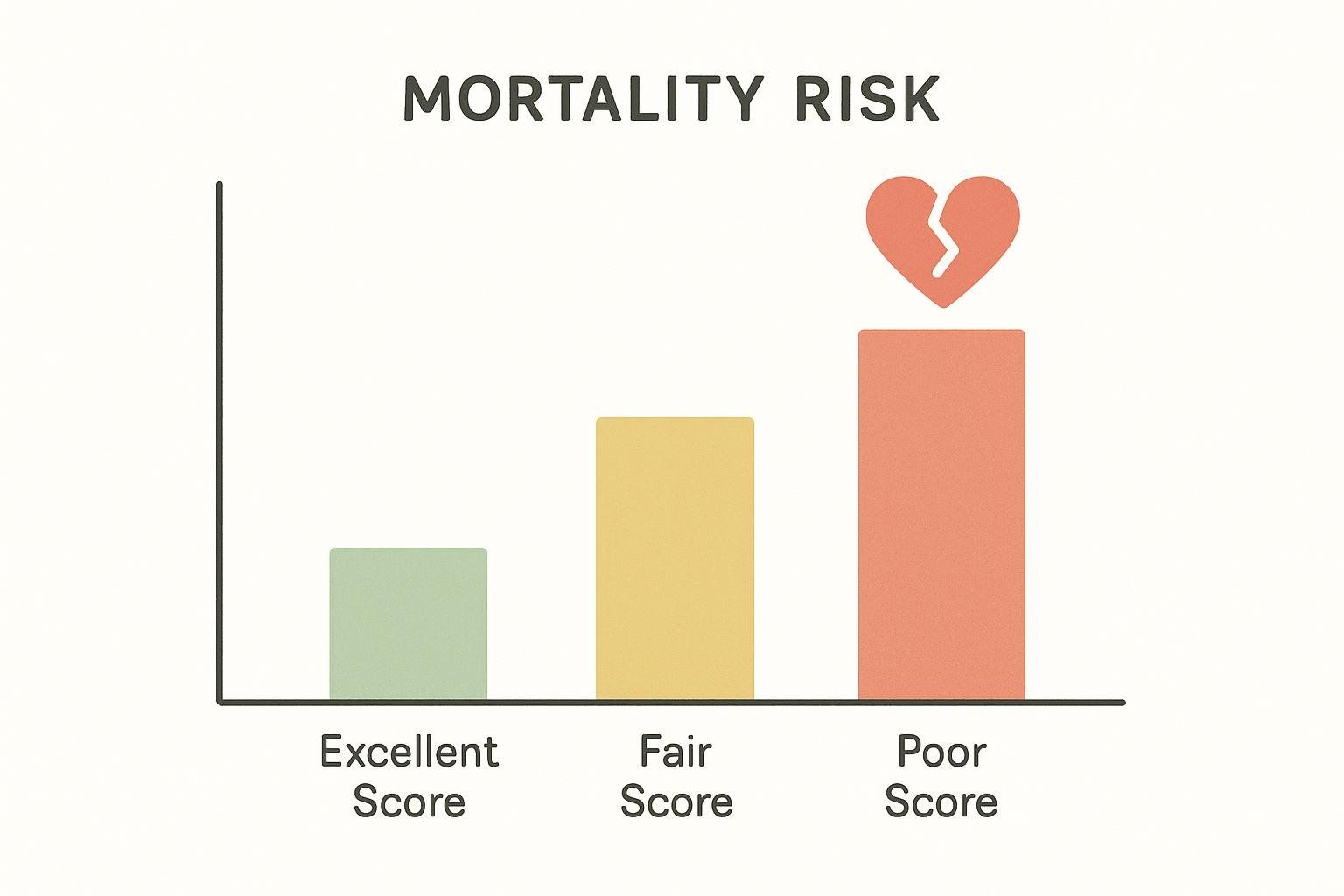
When researchers examined specific mortality causes, they found that participants with the lowest SRT scores showed 3.8-fold higher risk of death from natural causes and 6-fold higher risk of cardiovascular death specifically. What makes this particularly significant is that these findings remained consistent even after accounting for other common health factors like age, sex, weight, and existing medical conditions. This suggests the test reveals something unique about your overall health status that typical medical screenings might miss.
Why This Movement Predicts Longevity
According to Dr. Araújo and subsequent research, the sitting-rising test serves as a "biomarker of aging" because it reflects multiple systems working in harmony:
-
Neuromuscular Integration: The test requires precise coordination between your nervous system and muscles—a capacity that declines with age and predicts overall functional decline.
-
Metabolic Health: Good SRT performance typically correlates with favorable body composition, which is strongly linked to cardiovascular and metabolic health outcomes.
-
Musculoskeletal Integrity: The movements demand adequate muscle mass, joint mobility, and bone strength—all critical for maintaining independence and avoiding life-threatening injuries like hip fractures.
-
Cardiovascular Fitness: While not purely aerobic, the test requires sufficient cardiovascular capacity to support the dynamic movement pattern.
The test essentially captures your "functional age"—how well your body systems are working together—which can be more predictive of longevity than your chronological age alone.
How to Perform the Test: Step-by-Step Instructions
Safety and Contraindications
Essential safety note: Before attempting the SRT, ensure you're in a safe environment and physically capable of floor-based movements. The sitting-rising test, while generally safe, isn't appropriate for everyone.
Do not attempt the test if you have:
- Recent surgery (particularly abdominal, hip, knee, or spinal procedures)
- Acute joint pain or injury
- Severe arthritis that causes significant pain with movement
- Uncontrolled cardiovascular conditions
- Recent falls or balance disorders
- Cognitive impairment that affects movement safety
When to stop the test immediately:
- Chest pain or significant breathlessness
- Dizziness or lightheadedness
- Sharp joint pain
- Loss of balance that feels unsafe
- Any concerning symptoms
If you have any concerns about joint health, balance, or cardiovascular stability, consult with a healthcare provider first.
Pre-Test Preparation
Setup requirements:
- Clear, flat surface with adequate space (about 6 feet square)
- Non-slip surface or yoga mat
- Remove shoes and any restrictive clothing
- Have a sturdy chair or wall nearby for emergency support (but don't use them during the test)
Step-by-Step Performance
Starting Position:
- Stand tall with feet about hip-width apart
- Arms relaxed at your sides
- Focus on a point ahead for balance
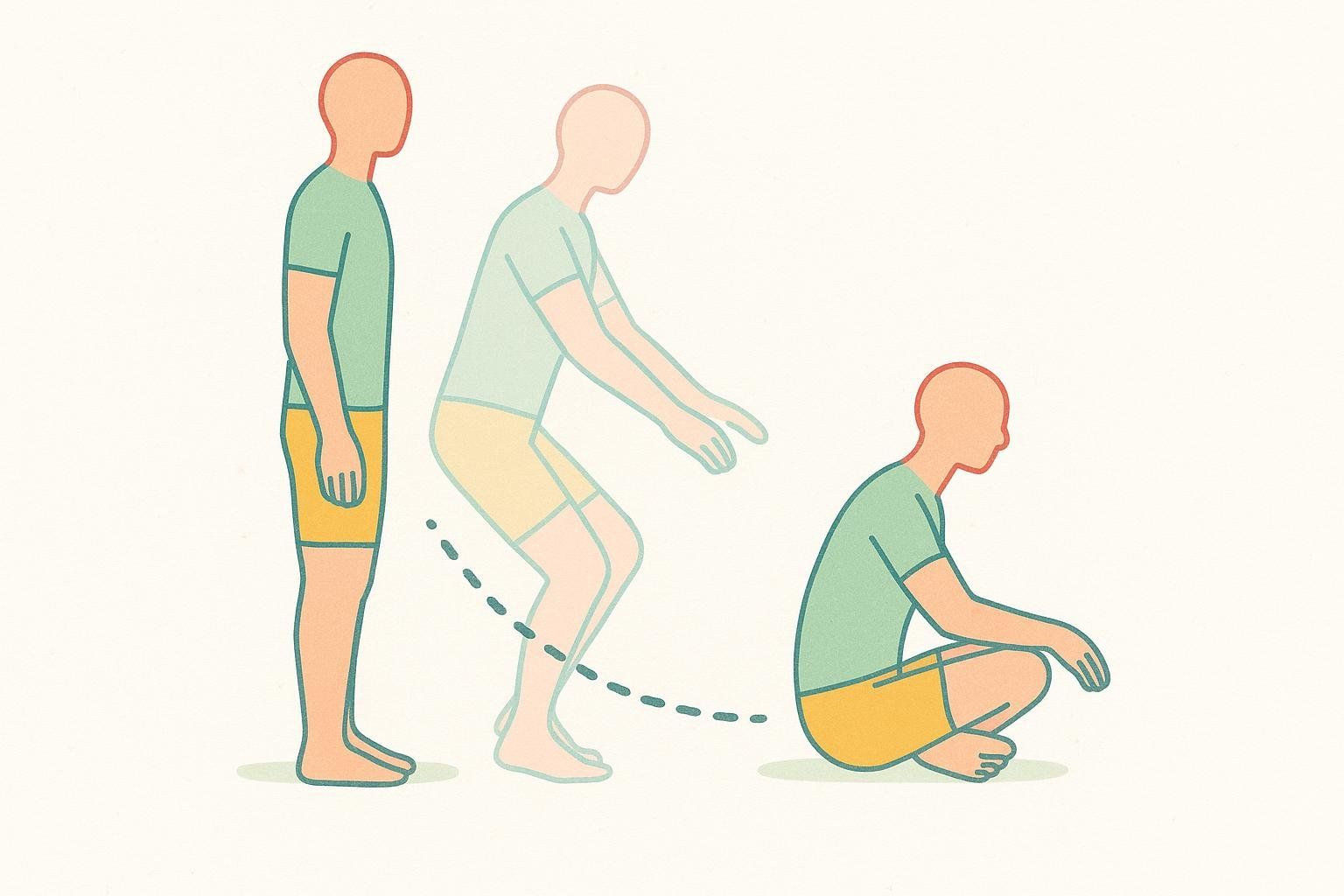
Descent Phase (Sitting Down):
- Begin lowering your body toward the floor
- Cross your legs as you descend (you can choose which leg crosses in front)
- Aim to touch your bottom to the floor in a cross-legged sitting position
- Maintain control throughout the descent
- Avoid using your hands, arms, or knees for support if possible
Ascent Phase (Standing Up):
- From the seated cross-legged position, begin rising
- Uncross your legs as needed for balance and power
- Push through your legs to return to standing
- Again, avoid using hands, arms, or knees for support if possible
- Maintain control—avoid rapid, jerky movements
Modifications for Special Populations
For Individuals With Arthritis or Joint Pain:
Studies examining functional movement assessments in older adults with arthritis show that modifications can maintain safety while preserving assessment value. Consider:
- Using a slightly higher starting position (sitting on a low stool or cushion)
- Allowing light hand support for balance only
- Focusing on movement quality rather than perfect scoring
For safety concerns or physical limitations:
- Hand placement: If balance is a concern, you can lightly touch the floor with fingertips during transitions (this will reduce your score but prioritizes safety)
- Chair assistance: For those with significant limitations, practicing the movement while holding a sturdy chair can help build strength and coordination
- Gradual progression: Start by practicing just the descent or just the ascent until you build confidence
For Those With Previous Injuries:
- Hip replacements: Generally safe after full recovery, but may affect scoring due to reduced range of motion
- Knee injuries: May require modified leg positioning or additional support
- Back issues: Extra attention to core stability and controlled movements
The Sit-Rise Test for Seniors: Special Considerations
Applying the Test to Older Adults
When using the sitting-rising test with seniors (typically defined as adults 65 and older), the standard 10-point scoring system remains the same, but both application and interpretation require special considerations. Research published in geriatric medicine journals examining sarcopenia and functional decline has revealed important insights about how age affects both performance and the meaning of scores.
While the scoring remains the same for all ages, expectations for performance are typically adjusted when working with senior populations. Older adults may naturally score lower due to age-related physiological changes, and these lower scores don't necessarily indicate poor health relative to their age group. Healthcare providers and fitness professionals often focus more on:
- Individual improvement: Changes over time rather than absolute scores
- Functional capacity: Whether the person can safely perform daily activities
- Movement quality: How controlled and confident the movements appear
- Safety consideration: Risk of injury during testing
Why Seniors Score Differently
Research specifically examining elderly populations shows that several age-related changes affect SRT performance:
Physiological factors:
- Sarcopenia: Age-related muscle loss affects power production needed for the ascent phase
- Joint stiffness: Reduced flexibility, particularly in hips and ankles, makes floor positioning challenging
- Balance changes: Altered proprioception and vestibular function affect movement control
- Bone density: Lower bone density may increase fear of falling, affecting willingness to attempt dynamic movements
Practical implications:
- Lower scores don't necessarily indicate poor health for age group
- Improvement potential exists but may require longer timeframes
- Safety considerations become more critical than absolute scoring
Safe Implementation for Seniors
Pre-test screening for elderly participants:
- Recent falls history (past 6 months)
- Current medications affecting balance or cognition
- Joint replacement or recent surgeries
- Chronic conditions like severe arthritis or neuropathy
- Cognitive status and ability to follow instructions
Environmental modifications:
- Always have qualified supervision present
- Use protective mats or cushioning
- Ensure immediate access to sturdy furniture for emergency support
- Consider starting with chair-based modifications
Progressive approach:
- Assessment phase: Observe current mobility and balance during normal activities
- Preparation phase: Practice component movements (sitting, standing, balance)
- Assisted phase: Attempt the test with light hand support available
- Independent phase: Attempt unassisted only if previous phases are successful
Modified scoring approaches: Some geriatricians recommend a safety-first approach that prioritizes completion and improvement over strict scoring:
- Completion bonus: Award points simply for safe completion regardless of support used
- Effort recognition: Consider partial credit for attempting the movement even if unable to complete
- Progress tracking: Focus on improvement over time rather than absolute scores
For older adults (Age 75+), Dr. Araújo notes that individuals up to age 95 have safely performed modified versions of the test. Recommended adaptations include ensuring a supervised environment, allowing practice attempts to familiarize with the movement, and focusing on improvement over time rather than absolute scores.
How Is the Sitting-Rising Test Scored?
The SRT uses a precise 10-point scoring system that evaluates your movement quality and independence during both phases of the test. Understanding this scoring system is crucial for accurate self-assessment and tracking improvement over time.
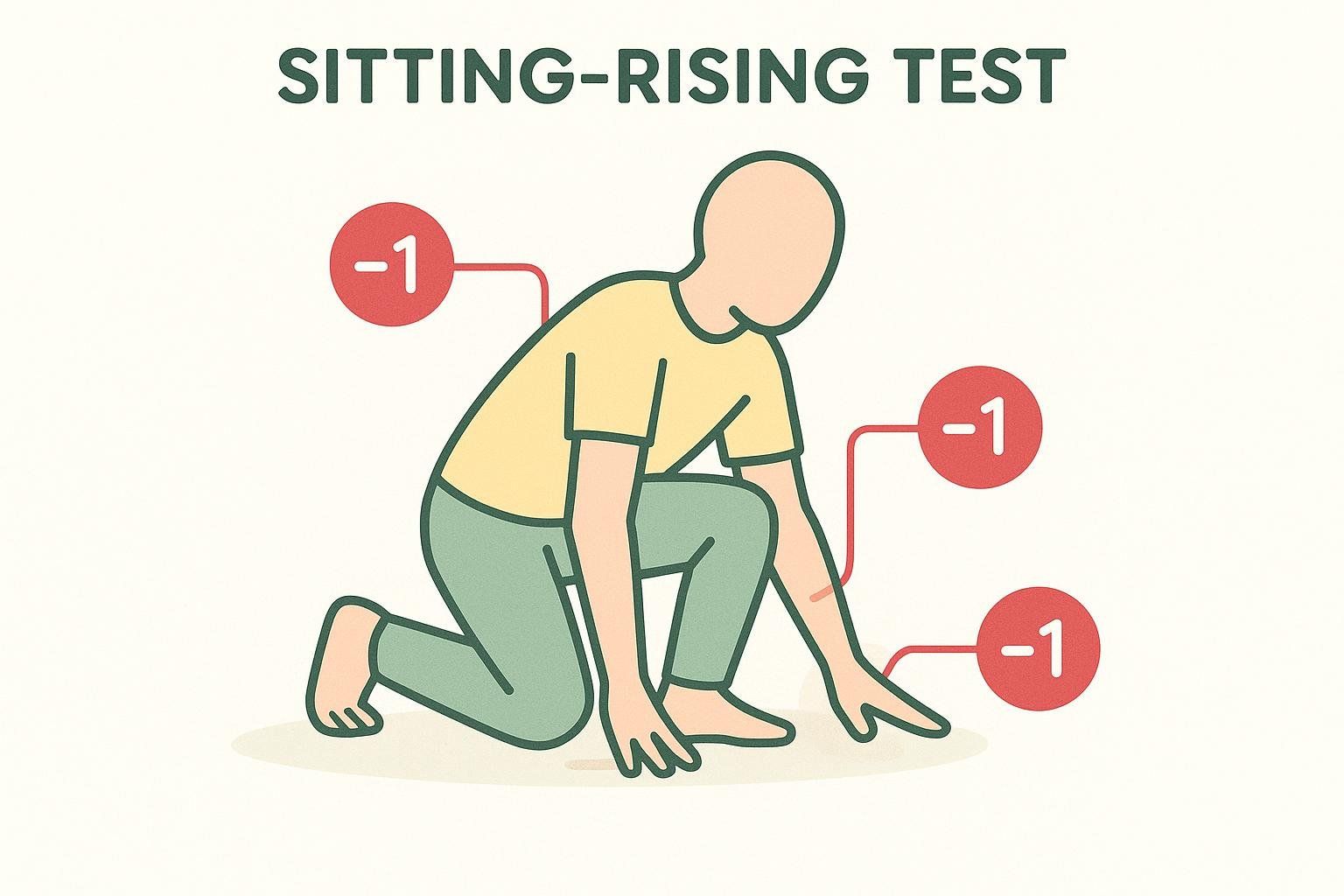
The Complete Scoring Breakdown
You start with a maximum of 10 points: 5 points for sitting down and 5 points for standing up.
Points are deducted for:
- Using your hand for support: -1 point (each use)
- Using your forearm for support: -1 point (each use)
- Using your knee for support: -1 point (each use)
- Placing a hand on your own thigh or knee for support: -1 point (each use)
- Losing balance during the movement but managing to recover without using any support: -0.5 points (each time)
Additional scoring nuances:
- If you must use external support (wall, chair, another person), the test receives a score of 0
- The same support can be penalized multiple times if used repeatedly during the same phase
- Brief touches count the same as sustained support
- Using both hands simultaneously counts as two separate deductions
Detailed Scoring Examples
Score of 10 (Perfect): Smooth descent to cross-legged position and smooth return to standing with no support and no balance issues. This represents optimal functional capacity for the movement pattern.
Score of 8.5: Used one hand briefly during the standing phase (-1 point) and had one minor balance wobble during descent (-0.5 points).
Score of 7: Used one hand during descent (-1 point) and one hand plus one knee during the ascent (-2 points).
Score of 4: Used one hand and one knee during the descent (-2 points), used one hand and one forearm during the ascent (-2 points), and lost balance four times (-0.5 points each, for a total of -2 points), resulting in a 6-point deduction from the starting 10.
Score of 1: Heavy reliance on multiple support points throughout, major balance challenges, but completed without external aids like chairs or walls.
What Makes Scoring Challenging
The scoring system can be tricky to apply accurately because:
- Rapid movements: Support usage can happen quickly and be easy to miss
- Borderline touches: Distinguishing between balance assistance and actual support
- Multiple supports: Tracking cumulative deductions across both movement phases
- Self-assessment bias: Tendency to under-count support usage
Tips for accurate scoring:
- Have someone else observe and score your attempt
- Video record your test for review
- Practice several times to understand what constitutes "support"
- Be honest about brief touches—they count toward your score
What Your Score Really Means
Translating Numbers Into Real-World Impact
Your SRT score doesn't just predict mortality risk—it provides insight into your current and future functional capacity. Here's how different score ranges typically translate to daily life capabilities:
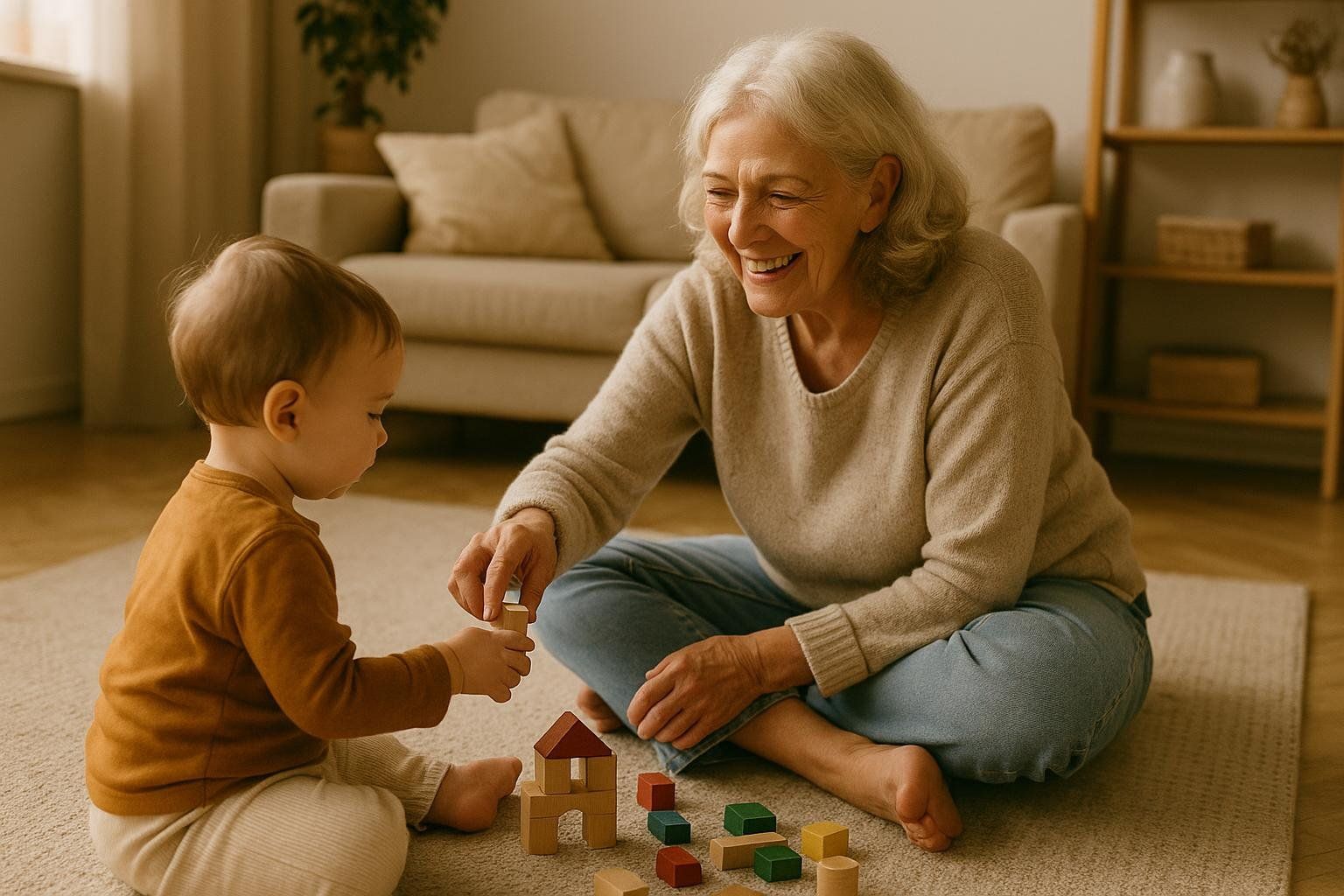
High Scores (8-10):
- Getting up from the floor after playing with grandchildren
- Recovering gracefully from trips or stumbles
- Maintaining independence in daily activities well into later life
- Lower risk of fall-related injuries
- Better overall physical resilience
Moderate Scores (5-7):
- Can handle most daily activities but may struggle with dynamic movements
- Increased fall risk in challenging situations
- May benefit significantly from targeted exercise interventions
- Potential for substantial improvement with proper training
Lower Scores (0-4):
- May already experience limitations in daily activities
- Higher risk of falls and related injuries
- Likely benefits from comprehensive functional fitness program
- Should consider professional assessment for underlying issues
The Limitations: What the Test Doesn't Measure
While powerful, the SRT isn't a complete health assessment. It doesn't directly measure:
- Cardiovascular endurance: You might score well but still struggle with sustained aerobic activity
- Upper body strength: The test primarily emphasizes lower body and core function
- Cognitive function: Mental acuity and decision-making speed aren't assessed
- Disease-specific risks: Conditions like cancer or autoimmune disorders aren't reflected in SRT performance
Think of the SRT as one important piece of your health puzzle—valuable, but most powerful when combined with other health metrics.
How Sedentary Behavior Impacts Your Sitting-Rising Test Score
The Connection Between Daily Activity and Functional Performance
While the sitting-rising test measures functional capacity, it also highlights a crucial question: does your daily activity level—specifically how much time you spend sitting versus standing and moving—directly affect how you perform on the test? Recent research suggests the answer is a resounding yes, with implications that go far beyond simple fitness.
The Science of Sedentary Behavior and Aging
Studies published in the JACC journal and research from Taiwan examining 481,688 individuals have revealed that prolonged sitting accelerates multiple aging processes that directly impact functional movement:
Metabolic aging:
- Extended sitting reduces insulin sensitivity, accelerating diabetes risk
- Decreases fat oxidation, promoting visceral fat accumulation
- Slows metabolic rate, affecting energy balance and body composition
Cardiovascular aging:
- Sitting for >10.6 hours daily increases cardiovascular disease risk, with significant increases in heart failure and cardiovascular death risk
- Occupational sitting increases cardiovascular disease mortality by 34% compared to those who don't sit much at work
- Reduces blood flow and endothelial function
- Elevates inflammatory markers associated with aging
Musculoskeletal aging:
- Hip flexor tightening from prolonged sitting directly impairs SRT performance
- Gluteal muscle weakening reduces power for floor-to-standing movements
- Spinal compression and poor posture accelerate disc degeneration
How Standing and Movement Slow Aging
Active standing benefits:
- Increases energy expenditure by 10-20% compared to sitting
- Maintains muscle activation, particularly in postural muscles
- Improves glucose metabolism and insulin sensitivity
- Enhances circulation and cardiovascular function
Regular movement breaks:
- Even 2-minute activity breaks every 30 minutes improve metabolic markers
- Standing and light movement every hour reduces cardiovascular disease risk
- Dynamic movements maintain joint mobility crucial for functional tests like the SRT
The SRT Connection: Why This Matters for Your Score
Your daily activity patterns directly impact your SRT performance:
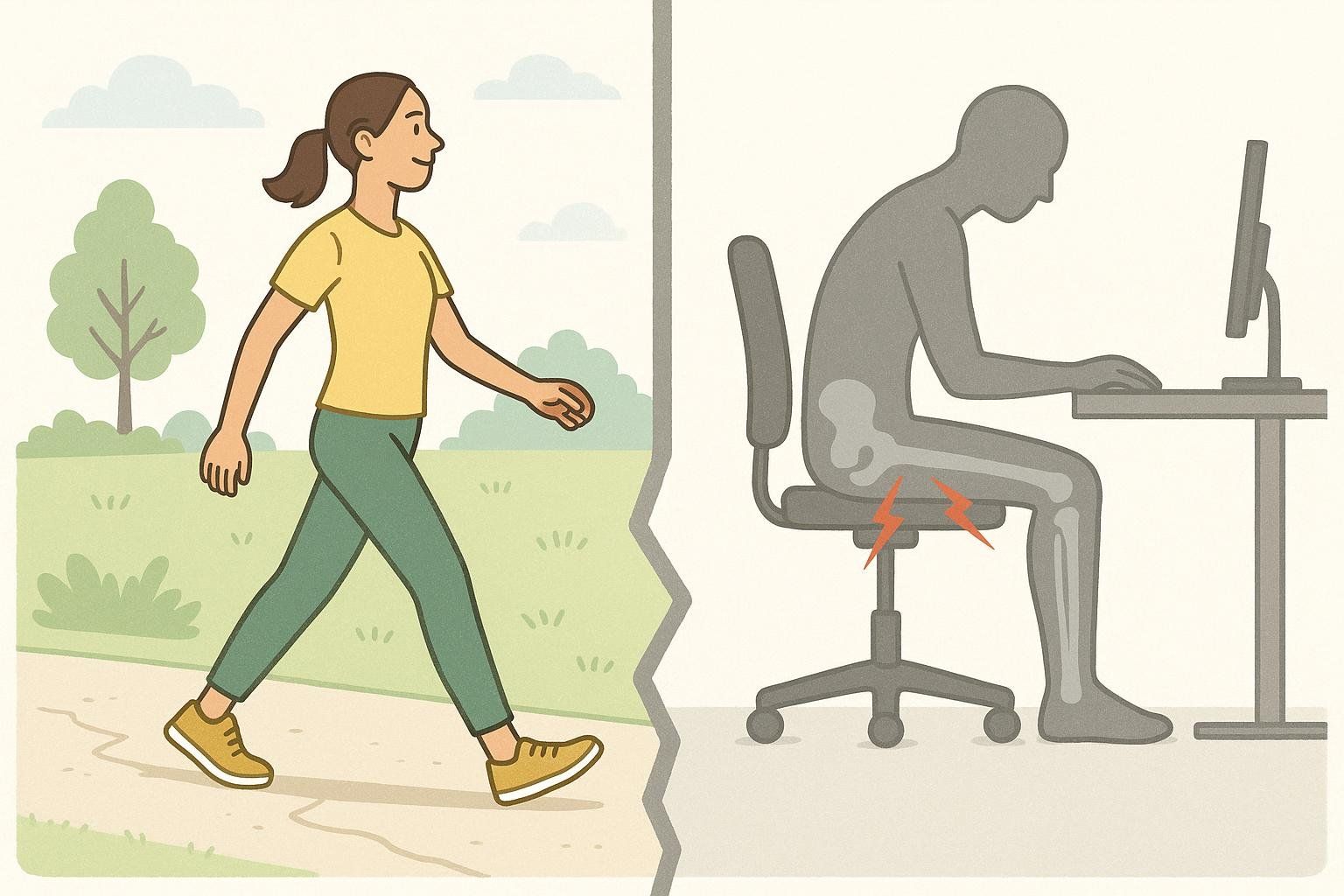
If you sit >8 hours daily:
- Hip flexor tightness makes the descent phase more difficult
- Weak glutes reduce power for the ascent
- Poor balance from reduced proprioceptive input
- Higher likelihood of needing support during transitions
If you incorporate regular standing/movement:
- Better hip mobility for smooth floor transitions
- Stronger posterior chain muscles for powerful ascent
- Enhanced balance and coordination
- More confident, controlled movements
Practical Strategies to Combat Sedentary Effects
Movement distribution framework: A helpful approach to consider is distributing your daily activities across three categories:
- Light activity or standing for significant portions of your day
- Moderate to vigorous activity for about 30-60 minutes
- Minimize and consolidate necessary seated time
Desk-based modifications:
- Standing desk for 2-4 hours daily
- Walking meetings when possible
- Hourly movement breaks (even 30 seconds helps)
- Desk exercises targeting hip flexors and glutes
SRT-specific daily habits:
- Practice floor sitting while watching TV
- Take stairs when available
- Park farther away and walk
- Practice standing from chairs without using hands
Research-Based Recommendations
The Taiwan study following adults over 12+ years showed that those who engage in prolonged occupational sitting need an additional 15-30 minutes of physical activity daily to help mitigate the increased mortality risk. Additionally, research suggests that individuals who:
- Stand for significant portions of their day show lower mortality risk
- Break up sitting every 30 minutes maintain better functional capacity
- Practice floor-based activities show better SRT scores regardless of age
The key insight: aging isn't just about chronological time—it's about cumulative physiological stress. Extended sitting accelerates this stress, while regular standing and movement provide protective effects that translate directly to better performance on functional assessments like the SRT.
The Body Composition Connection: Why DEXA Data Matters
The sitting-rising test reveals functional capacity, but to truly understand and improve your performance, you need to look deeper—specifically at your body composition. This is where DEXA scan data becomes invaluable.
How Muscle Mass Impacts SRT Performance
Appendicular Lean Mass Index (ALMI) is a key metric that DEXA scans provide—it measures the muscle mass in your arms and legs relative to your height. Research shows that individuals with higher ALMI scores typically perform better on functional tests like the SRT because:
- Power-to-weight ratio: More lean muscle relative to total body weight makes it easier to lift yourself from the floor
- Stability: Well-developed leg and core muscles provide the foundation for controlled movement
- Metabolic efficiency: Higher muscle mass supports better overall metabolic health
Low ALMI levels are generally defined as below 7.0 kg/m² for men and 5.5 kg/m² for women according to the EWGSOP2 criteria, which are used to identify sarcopenia and functional decline. If your DEXA shows low ALMI and your SRT score is poor, targeted resistance training becomes a priority.
The Visceral Fat Factor
Visceral fat—the deep abdominal fat that surrounds your organs—significantly impacts functional movement. Higher levels of visceral fat:
- Alter center of gravity: Making floor-based movements more challenging
- Reduce core stability: Affecting your ability to control movement
- Increase inflammation: Impairing recovery and adaptation from exercise
- Predict cardiovascular risk: Directly linking to the mortality outcomes seen in SRT studies
DEXA scans can precisely measure your visceral fat area. Keeping it below 100 cm² supports both SRT performance and longevity outcomes.
Bone Density's Role in Movement Confidence
While bone density doesn't directly affect SRT performance, it influences movement confidence—especially in older adults. Those with better bone health (as measured by DEXA T-scores) are often more willing to attempt dynamic movements because they have less fear of fracture-related injuries.
Using DEXA Data to Optimize Your SRT Training
A comprehensive approach to improving SRT performance includes:
- Baseline DEXA scan to understand current body composition
- Targeted training based on your specific deficits (muscle building vs. fat loss vs. flexibility)
- Follow-up scans every 3-6 months to track progress
- Adjusting strategy based on objective changes in muscle mass, fat distribution, and bone density
For example, if your DEXA shows:
- Low ALMI → prioritize resistance training
- High visceral fat → emphasize cardio and dietary changes
- Poor bone density → include weight-bearing exercises
Evidence-Based Strategies to Improve Your Score
The encouraging news from Dr. Araújo's research is that SRT scores can improve at any age. Here are proven strategies to enhance your performance:
1. Hip Mobility and Strength Training
The movement pattern of the SRT places significant demands on hip flexibility and strength. Key exercises include:
Hip Flexor Stretches:
- 90/90 stretch: Sit with both legs bent at 90 degrees, lean forward over front leg
- Couch stretch: Rear foot elevated, deep lunge position
- Frequency: 2-3 times daily, holding 30-60 seconds
Hip Strength Exercises:
- Goblet squats: Builds strength in SRT-specific ranges
- Single-leg deadlifts: Improves balance and unilateral strength
- Lateral lunges: Enhances multi-directional stability
- Frequency: 2-3 sessions per week, 3 sets of 8-12 reps
2. Core Stability and Control
A strong, coordinated core is essential for controlling the descent and ascent phases.
Progressive Core Training:
- Dead bugs: Teaches core control with limb movement
- Bird dogs: Builds stability and coordination
- Pallof press: Anti-rotation strength
- Bear crawl holds: Full-body stability
- Frequency: Daily practice, 3 sets of 10-15 reps
3. Balance and Proprioception
The SRT demands dynamic balance throughout multiple movement phases.
Balance-Specific Exercises:
- Single-leg stands: Progress from eyes open to eyes closed to unstable surface
- Dynamic balance reaches: Standing on one leg while reaching in different directions
- Yoga flow sequences: Sun salutations or warrior sequences
- Frequency: Daily practice, 5-10 minutes
4. Movement Pattern Practice
Sometimes the limitation isn't strength or flexibility but motor learning—your nervous system needs to practice the specific movement pattern.
SRT-Specific Practice:
- Assisted versions: Using light hand support initially
- Partial range: Practicing just the descent or ascent
- Slow tempo: Taking 5-10 seconds for each phase
- Different starting positions: Cross your legs differently each attempt
- Frequency: 3-5 attempts every other day
5. Strength Training with a Longevity Focus
Your SRT performance is just one marker of functional capacity. Building overall strength supports better scores while providing broader health benefits.
Essential Movement Patterns:
- Squats: Bodyweight, goblet, or barbell variations
- Deadlifts: Teaches hip hinge pattern crucial for SRT
- Push-ups: Upper body strength and stability
- Rows: Posture and pulling strength
- Carry variations: Farmer's walks, suitcase carries
Programming recommendations:
- Frequency: 2-3 resistance training sessions per week
- Intensity: Moderate to challenging (7-8 out of 10 effort)
- Progression: Gradual increases in weight, reps, or complexity
- Recovery: 48-72 hours between sessions targeting same muscle groups
6. Flexibility and Mobility Work
Adequate range of motion in key joints is non-negotiable for good SRT performance.
Priority Areas:
- Ankle dorsiflexion: Calf stretches, wall ankle stretches
- Hip flexion and internal rotation: Pigeon pose, 90/90 stretches
- Thoracic extension: Cat-cow, thoracic extensions over foam roller
- Frequency: Daily, 10-15 minutes
Beyond the Test: Building Functional Longevity
While improving your SRT score is valuable, the ultimate goal is building what researchers call "functional longevity"—the ability to maintain independence and quality of life as you age. The SRT is both an assessment tool and a gateway to broader health optimization.
The Longevity Lifestyle Framework
Physical Foundation:
- Strength training: 2-3 sessions per week focusing on compound movements
- Cardiovascular exercise: 150-300 minutes of moderate activity weekly
- Flexibility and mobility: Daily practice focusing on movement quality
- Balance training: Integrated into other activities or standalone practice
Metabolic Health:
- Protein intake for muscle maintenance: Research suggests 1.2-1.6 grams per kilogram of body weight daily for adults over 40 to support muscle maintenance and recovery. Emphasize whole food sources and consult a registered dietitian for personalized guidance
- Body composition: Maintain healthy muscle mass and minimize visceral fat
- Sleep: 7-9 hours of quality sleep nightly
- Stress management: Regular practice of stress-reduction techniques
Functional Practice:
- Real-world movements: Practice getting up from floor regularly
- Environmental challenges: Vary your movement environments and surfaces
- Progressive difficulty: Gradually increase movement complexity as you improve
- Social movement: Engage in activities with others (dancing, sports, group fitness)
Tracking Progress Beyond the SRT
While monthly SRT testing can track functional improvements, consider these additional markers:
Quarterly DEXA Scans: Track changes in muscle mass, visceral fat, and bone density to ensure your training is producing the desired physiological adaptations.
Functional Assessments:
- Grip strength: Simple marker of overall strength and longevity
- Gait speed: Walking pace over a set distance predicts multiple health outcomes
- Single-leg stand time: Balance and stability assessment
Quality of Life Measures:
- Energy levels throughout the day
- Sleep quality and recovery
- Confidence in physical activities
- Independence in daily tasks
Putting It All Together: Sample Scenarios
Scenario 1: David, the Proactive Pre-Retiree
David, 58, was concerned about maintaining his health and independence as retirement approached. His initial SRT score was 6—he required placing one hand and one knee on the floor during both the descent and ascent.
His BodySpec DEXA scan revealed:
- ALMI: 7.2 kg/m² (borderline for his age)
- Visceral fat: 125 cm² (above optimal)
- Bone density: T-score of -1.2 (osteopenia range)
David's 6-month intervention:
- Twice-weekly strength training focusing on squats, deadlifts, and core work
- Daily 10-minute mobility routine emphasizing hip and ankle flexibility
- Three weekly cardio sessions (walking, cycling)
- Implemented dietary changes to increase protein and reduce processed foods
Results:
- SRT score improved to 9 (used hand support once during ascent)
- ALMI increased from 7.2 to 7.8 kg/m²
- Visceral fat decreased from 125 cm² to 98 cm²
- T-score stabilized at -1.2, halting further decline
David's case perfectly demonstrates how combining objective data with targeted interventions creates measurable improvements in functional capacity.
Scenario 2: Maria, the Fitness-Savvy Skeptic
Maria, 42, was an experienced runner and yoga practitioner but scored only 7 on her initial SRT. On her first attempt, she required one hand for support during the descent (-1 point) and one hand plus one knee during the ascent (-2 points), revealing a deficit in multi-planar strength despite her fitness level.
Her DEXA confirmed excellent low body fat and high muscle mass, but this highlighted a disconnect between her composition and functional movement capacity, pinpointing the need for movement-specific training rather than just a focus on body composition.
Maria's approach:
- Added rotational and multi-planar movements to her routine
- Incorporated more floor-based exercises (Turkish get-ups, crawling patterns)
- Focused on single-leg strength and stability work
- Continued her running and yoga but with more emphasis on functional movement patterns
Results:
- SRT score achieved perfect 10 within 3 months
- Reported improved performance in her other activities
- Gained confidence in dynamic, unexpected movements
Maria's experience shows that even highly trained individuals may have functional blind spots that specific assessments can reveal and targeted training can address.
Scenario 3: Susan and Her Father
Susan, 64, initially wanted to assess the SRT for her 86-year-old father with arthritis. However, after learning about the safety considerations, she decided to focus on the principles rather than the exact test.
Modified approach for her father:
- Chair-assisted sit-to-stand exercises
- Gentle floor transitions using furniture support
- Daily balance exercises holding a counter
- Light strength training with resistance bands
Susan's personal journey:
- Started practicing the SRT herself, initially scoring 5
- Followed a beginner-friendly exercise program
- Achieved a score of 8 after 4 months
- Gained confidence to help her father with more dynamic exercises
Father's improvements:
- Increased independence in daily activities
- Reduced fall anxiety
- Better overall mobility and confidence
Susan's story illustrates how functional movement principles benefit entire families, creating safer environments and better outcomes even when direct testing isn't appropriate.
Conclusion: Your Path to Functional Longevity
The sitting-rising test represents far more than a simple fitness assessment—it's a window into your functional future. The research is clear: your ability to perform this basic human movement pattern is strongly predictive of not just how long you'll live, but how well you'll live those years.
Key takeaways:
-
The SRT is a powerful predictor: Scoring 8 or above correlates with significantly lower mortality risk and better functional outcomes.
-
Improvement is possible at any age: Dr. Araújo's research shows that SRT scores can improve regardless of starting point or age.
-
It's about more than the test: The SRT reveals deficits in strength, flexibility, balance, and body composition that impact all aspects of life.
-
Data drives results: Combining SRT assessment with DEXA scan insights provides a complete picture of your functional capacity and guides targeted interventions.
-
Safety first: The test isn't appropriate for everyone, but the underlying principles of functional movement apply universally.
Your next steps:
- Assess your current capacity: If safe for you to do so, perform the SRT and record your score
- Get objective data: Schedule a BodySpec DEXA scan to understand your body composition baseline
- Create your plan: Choose 2-3 exercises from our guide that directly target your weakest areas (e.g., hip mobility, core control) and schedule them into your weekly routine
- Progress gradually: Focus on consistent improvement rather than perfect scores
- Retest regularly: Monthly SRT assessments and quarterly DEXA scans track your progress
- Think beyond the numbers: Use improved functional capacity to enhance your daily life and long-term health
The sitting-rising test isn't just about adding years to your life—it's about adding life to your years. Whether you're 45 or 75, the time to start building functional longevity is now. Your future self will thank you for every squat, every stretch, and every mindful step you take toward maintaining the physical capacity to live life on your own terms.
Ready to see where you stand? Book a BodySpec DEXA scan today and start your journey toward functional longevity with objective, actionable data.
